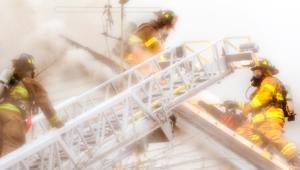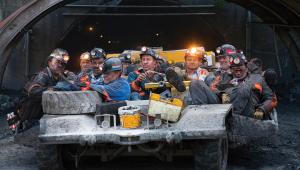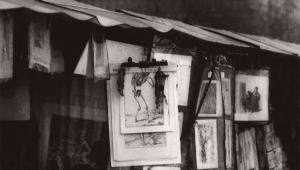How to Get Your Mojo Back as a Photographer: Tips For “Recharging Your Photo Batteries” From A Pro Workshop Leader

If you were to ask me on any given day what my life as a photographer was like, I would say I was indeed “living the dream.” But the truth is, even people “living the dream” get burned out from time to time.
Every so often I find myself running out of gas and feeling the accumulated effects of days of traveling, photographing, teaching, editing, and writing. While it isn’t always easy to self-diagnose being overworked, it is easy to see the productivity and creativity of one’s photography decreasing. It is at these times I find I need to take some time away from “work” and head into the mountains to help recharge my personal batteries and get the creative juices flowing again.
Not long ago I had been super busy in the office and then rushed down to Yosemite to teach a winter photography workshop timed to take advantage of Horsetail Falls. In addition to work, I had been dealing with the slow death of my beloved grandmother over the last few weeks that included a couple of overnight trips to Seattle.
Knowing I would be tired and needing to relax after teaching my workshop, I decided to catch a few turns at Badger Pass Ski Resort before heading home. But by the time my workshop was drawing to a close, the thought of spending time among lots of people at a ski resort was sounding less and less appealing.

Getting Out There
If you have ever been to Yosemite, even in the winter, you know it is nearly impossible to be truly alone in the valley. Typically, when teaching photo workshops I always try to allow myself a couple of extra days before or after a trip to do my own shooting and scouting. But in this case, the last thing I needed was to be around more people. Years before, while between guiding jobs in the park, I had spent a few days exploring spots along the valley rim looking for potential photo locations, and felt Taft Point had just what I needed to recharge.
So, after wrapping up my workshop, I decided to leave the valley and drive up to Glacier Point Road, which was closed for the winter. What few photographers realize is that though Glacier Point Road is closed in the winter at Badger Pass Ski Resort, it is groomed for cross-country skiing all the way to Glacier Point, which makes backcountry travel very easy. The park concessioner operates the summer visitor center as a winter ski lodge, serving hot meals and offering a warm place to sleep within sight of the amazing Glacier Point view of Half Dome.
Wanting to be alone and building upon my previous research of the area, I opted to leave the groomed road after a few miles and break my own trail, skiing north toward the valley rim and Taft Point. Being that it was between 8-10 miles one way to Taft Point, and wanting to shoot the sunset, I knew the only way to make the trip work would be to spend a cold night alone on the canyon rim after my shoot. Along with more personal time, this offered the additional benefit of giving me a chance to shoot the sunrise.
After enjoying some great fresh turns on the way to the rim, I had just enough time to scout a sunset location and set up my lightweight tripod literally inches from a cornice of snow overhanging the valley below. After shooting Horsetail Falls from the valley the previous few days, I really wanted to line up the last light on El Capitan with something to show my high vantage point and the winter snows.
I would have liked to have been even closer to the edge, but after close inspection of the cornice from farther along the cliff, I wasn’t really sure where the cliff ended and open air began under the overhanging snow. Needless to say, I approached my chosen spot very gently and placed the tripod even farther out than I was willing to stand, opting to lean out to look through the viewfinder while being ready to jump to safety if the snow made any signs of movement.

Capturing The Light
While every landscape photographer hopes for dramatic storm clouds and shafts of golden light every time they head into the field, this is rare and we take the light we are given as a gift. In this case, the sky had been clear blue all day without a hint of clouds, which was less than ideal for the dramatic landscape shot I envisioned. But as often happens in the late afternoon, a thin layer of clouds began growing in the western sky. Though it never took shape into the dramatic clouds I was hoping for, I knew it would still be enough to pick up the sunset color and that, when combined with the sunset light reflecting off the snow, would make for an amazing color palette.
Shooting a wide range of compositions and bracketing widely for exposure, I shot until the light completely left the clouds and the first stars started coming out. Knowing it was going to get cold fast, I safely backed way from the cornice about 50 feet, stomped out a sleeping platform and immediately climbed into my sleeping bag and fired up my stove.
After melting water for tea, I cooked up the best tasting meal I’d had in months. The fancy Yosemite Mountain Room Restaurant is nothing compared to a box of macaroni and cheese when cooked after an amazing sunset. After dinner I pulled my sleeping bag tight around my head and stretched out. I reflected on the past few weeks and watched the stars streak past until I fell asleep. All went well until around midnight when the wind picked up and I was forced to climb into my bivi sack to block the blowing snow and wind.

Taking Risks
By the time morning arrived, the skies were clear and the wind had died down. After a quick sunrise photo shoot (sans clouds) and breakfast, I donned my skis and climbed back up to the road, where I enjoyed a long downhill glide on the icy road back toward Badger Pass Ski Resort. At that moment I felt more relaxed and invigorated than I had during any of the previous weeks leading up to my workshop.
I had taken a risk: by not knowing if my chosen location would work as a winter photo, I had passed great shots of Horsetail Falls, which people from all over the country had flown in to shoot. But by taking this lesser-known path I was able to recharge my personal batteries much faster than had I spent a week shooting in the valley “alone.” Having been completely burned out less than 24 hours prior, it was amazing what the effect a single solo adventure in nature with an unknown photographic outcome had been.
More often than not, in photography as well as life, when the outcome is unknown it only adds to the quality of the experience. After photographing and sleeping under the stars on the edge of one of the world’s greatest natural wonders for a single night, I was again ready to tackle the world. I headed off to the North American Nature Photography Association conference, where I met with several conservation photographers to talk about future projects and taught a one-day photo workshop at Lake Tahoe, all the while remembering how a sunset and a box of mac and cheese can make for an amazing personal battery recharge.
Josh Miller’s images have been featured in publications throughout the world and his work is represented by Aurora Photos. To find out more about his work or his photo workshops, please visit his website at www.joshmillerphotography.com.











































